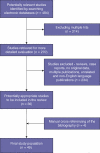Experimental and clinical evidence for modification of hepatic ischaemia-reperfusion injury by N-acetylcysteine during major liver surgery
- PMID: 21241423
- PMCID: PMC3044340
- DOI: 10.1111/j.1477-2574.2010.00263.x
Experimental and clinical evidence for modification of hepatic ischaemia-reperfusion injury by N-acetylcysteine during major liver surgery
Abstract
Background: Hepatic ischaemia-reperfusion (I/R) injury occurs in both liver resectional surgery and in transplantation. The biochemistry of I/R injury involves short-lived oxygen free radicals. N-acetylcysteine (NAC) is a thiol-containing synthetic compound used in the treatment of acetaminophen toxicity. The present study is a detailed overview of the experimental and clinical evidence for the use of NAC as a pharmaco-protection agent in patients undergoing major liver surgery or transplantation.
Methods: A computerized search of the Medline, Embase and SCI databases for the period from 1st January 1988 to 31st December 2008 produced 40 reports. For clinical studies, the quality of reports was assessed according to the criteria reported by the Cochrane communication review group.
Results: Nineteen studies evaluated NAC in experimental liver I/R injury. NAC was administered before induction of ischaemia in 13. The most widely used concentration was 150 mg/kg by intravenous bolus. Fifteen studies report an improvement in outcome, predominantly a reduction in transaminase. Seven studies used an isolated perfused liver model with all showing improvement (predominantly an improvement in bile production after N-acetylcysteine). Two out of four transplantation models showed an improvement in hepatic function. Clinical studies in transplantation show a modest improvement in transaminase levels with no beneficial effect on either patient or graft survival.
Conclusion: N-acetylcysteine, given before induction of a liver I/R injury in an experimental model can ameliorate liver injury. Clinical outcome data are limited and there is currently little evidence to justify use either in liver transplantation or in liver resectional surgery.
© 2011 International Hepato-Pancreato-Biliary Association.
References
-
- Laca L, Olejnik J, Vician M, Grandtnerova B, Zahradnik V. The effects of occlusive techniques on the short-term prognosis after liver resections. Hepatogastroenterology. 2006;53:576–579. - PubMed
-
- Kretzschmar M, Kruger A, Schirrmeister W. Hepatic ischemia-reperfusion syndrome after partial liver resection (LR): hepatic venous oxygen saturation, enzyme pattern, reduced and oxidized glutathione, procalcitonin and interleukin-6. Exp Toxicol Pathol. 2003;54:423–431. - PubMed
-
- Serracino-Inglott F, Habib NA, Mathie RT. Hepatic ischemia-reperfusion injury. Am J Surg. 2001;181:160–166. - PubMed
-
- Lander HM. An essential role for free radicals and derived species in signal transduction. FASEB J. 1997;11:118–124. - PubMed
-
- Yu BP. Cellular defences against damage from reactive oxygen species. Physiol Rev. 1994;74:139–162. - PubMed
Publication types
MeSH terms
Substances
LinkOut - more resources
Full Text Sources
Medical


